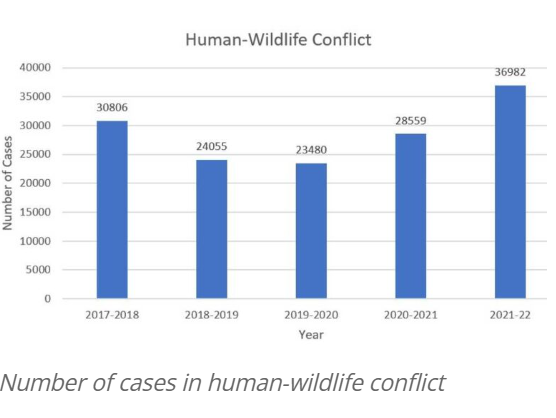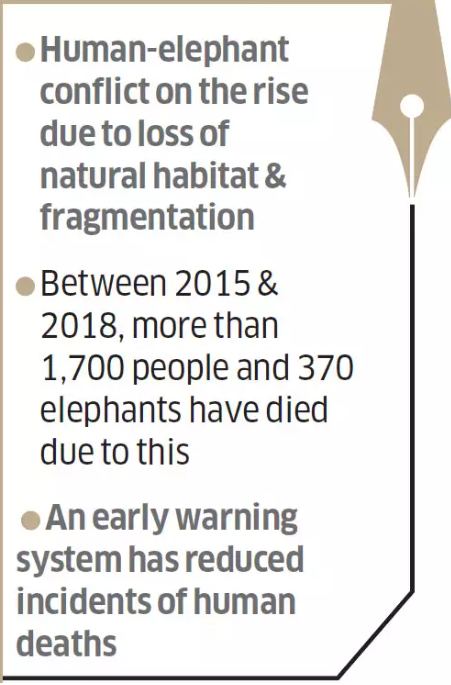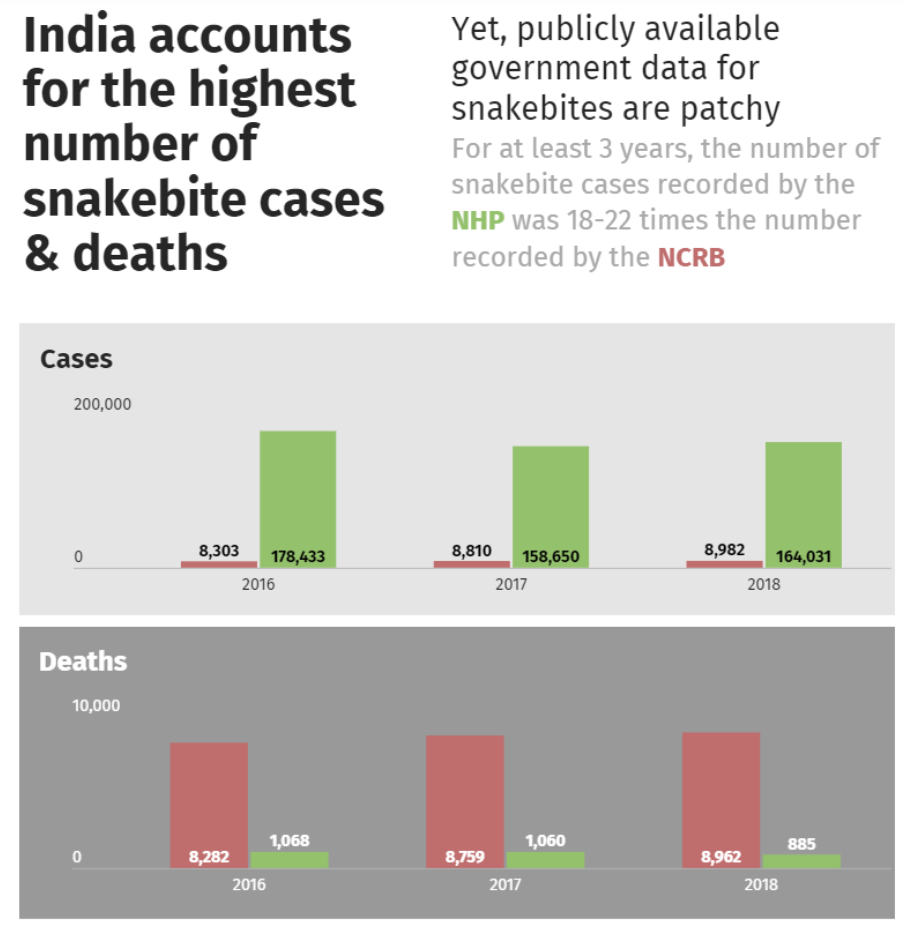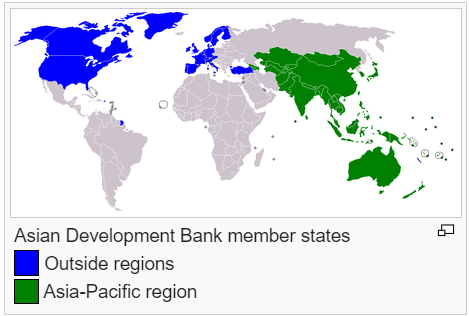CONTENTS
- The Blurry Lines Between Wildlife ‘Capture’ And ‘Rescue’
- Asian Development Bank (ADB)’s Report on India’s GDP Growth
The Blurry Lines Between Wildlife ‘Capture’ And ‘Rescue’
Context:
Rescue is defined as the act of saving or being saved from danger or difficulty. In the realm of wildlife, the term ‘rescue’ evokes a sense of optimism for the animal’s survival, the excitement of the operation, admiration for the skills of human responders, and recognition of the challenges of coexisting with wildlife.
Relevance:
GS3- Biodiversity and Conservation
Mains Question:
In the context of escalating frequency of human-wildlife interactions in India, examine the difference between wildlife capture and rescue. Is there a lack of awareness in the community about the distinction between capture, removal, and genuine rescue? (15 Marks, 250 Words).
Rising Human-Wildlife Interactions in India:
In India, the increasing occurrence of human-wildlife interactions is undeniable. Given the inevitability of conflicts with wildlife, it’s crucial to seek better solutions beyond reactive capture and relocation, which have often proven unsustainable or even harmful to the animals involved. Distinguishing between a genuine “wildlife rescue” and mere “capture” can be a nuanced challenge in India.

“Wildlife Rescue” and “Wildlife Capture”:
- Successfully capturing animals involved in conflicts, such as elephants, snakes, and large carnivores, involves various complex techniques, including chemical and physical immobilization, and requires a well-coordinated team of experts with specific roles.
- Common rescue scenarios include situations like leopards stuck in open wells, elephants stranded in irrigation tanks, snakes trapped in homes, or elephant calves separated from their herds.
- However, the mere presence or sighting of wildlife in areas outside their perceived habitat doesn’t always necessitate a rescue.
- Instances like leopards preying on livestock or elephants damaging crops affect communities but may not always justify capture under the guise of rescue.
- An effective response and proactive conflict management system are demonstrated when tense situations are resolved without the need for capturing or relocating an animal.
Advice on ‘Capture’ that is Ignored:
- The guidance provided by the central government, formulated with input from experts, specifically advises against the capture of leopards or elephants solely based on sightings.

- Instead, it emphasizes the importance of preventative measures and stresses that capturing an animal should only be considered as a last resort. Unfortunately, this counsel is frequently disregarded in practical situations.
- A recent incident in southern India exemplifies the ambiguity between “rescuing” and “capturing” elephants.
- In this case, an elephant captured from a coffee plantation under the pretense of a rescue was fitted with a radio collar and released 200 kilometers away into unfamiliar territory, leading to its subsequent entry into a neighboring state. Subsequent rescue attempts resulted in the animal’s death.
- Similarly, in September 2023, a leopard in Balrampur district, Uttar Pradesh, was “rescued” after being spotted in an agricultural field but succumbed to unknown causes within hours. The notion of labeling every capture as a rescue is, at best, misleading.
The Rescue of Snakes:

- When examining how conflicts with snakes are managed, the lack of distinction between capture, removal, and genuine rescue becomes glaringly evident.
- Interactions with snakes occur more frequently than with any other wild animals combined, leading to a higher likelihood of mishandling, unnecessary removal from their habitats, relocation to unfamiliar environments, and exploitation for social media content, all in the guise of ‘rescuing’ them. Numerous studies indicate that relocated snakes face bleak survival prospects.
- Moreover, relocation fails to address the underlying conflict; instead, it creates a vacuum that could potentially be filled by multiple snakes, thereby exacerbating conflict occurrences. These purported ‘rescue’ efforts, regardless of the species involved, often inflict physical trauma, injuries, and severe stress, jeopardizing the animals’ chances of survival post-release.
- The term ‘rescue’ inherently suggests a threat to one species by another. It implies that either elephants or snakes are endangered by human activities, or conversely, humans are threatened by the wildlife sharing their habitat. However, framing interventions as ‘rescues’ can inadvertently vilify one party or the other, undermining public trust in conservation efforts.
Way Forward:
- Viewing ‘rescue’ as the sole solution to conflicts draws divisive lines and fosters an adversarial relationship between animals and humans, hindering long-term conservation objectives.
- Instead, we must adopt a more comprehensive approach that recognizes communities as comprising both human and non-human members, avoiding polarization in wildlife management practices.
- Addressing potential conflicts between humans and non-human animals in shared environments requires a pragmatic approach that begins with a thorough assessment of the situation.
- This involves identifying the root cause of the conflict, minimizing stress factors for the animals involved, ensuring that all proactive measures have been exhausted, and prioritizing interventions that prioritize both animal welfare and human well-being. Proactive strategies to prevent conflicts before they escalate should be our primary focus.
- It’s crucial to recognize that the relocation of a wild animal not only disrupts the ecosystem from which it is taken but also impacts the new ecosystem into which it is introduced. Therefore, any relocation strategy must prioritize the welfare of the animals involved.
The Karnataka Example:
- In India, particularly in Karnataka, the Forest Department is spearheading various promising initiatives aimed at mitigating human-wildlife conflicts.
- These include the implementation of early warning systems, regular monitoring of wildlife movements, strategic fencing, improved lighting in conflict-prone areas, public education campaigns, and enhanced waste management practices to minimize or better prepare communities for potential interactions with wildlife.
- However, there is a pressing need to mobilize greater resources and commitment to conduct valuable research and implement innovative strategies effectively.
Conclusion:
As we seek to find the most effective approaches to conflict resolution through relocation and related strategies, we must consider the significant animal welfare considerations. Ultimately, the goal should be to adopt an approach that benefits both humans and animals, leaving all parties better off in the long run.
Asian Development Bank (ADB)’s Report on India’s GDP Growth
Context:
On Thursday, the Asian Development Bank (ADB) revised its projection for India’s GDP growth in the current fiscal year, ending on March 31, 2025, upward to 7%, up from its earlier forecast of 6.7%. This adjustment reflects the ADB’s optimism regarding robust levels of both public and private investment, alongside expectations for a gradual rebound in consumer demand, particularly as the rural economy continues to recover. Looking ahead to fiscal year 2025-26, the ADB anticipates further growth, projecting a 7.2% expansion for India’s economy.
Relevance:
- GS2- Important International Institutions, agencies and fora – their Structure, Mandate.
- GS3- Indian Economy- Growth and Development
Mains Question:
Discussing the primary objective of the Asian Development Bank (ADB), analyse how the Indian economy expected to fare as per the recently released report by the Asian Development Bank (ADB). (10 Marks, 150 Words).
Asian Development Bank (ADB):
- The Asian Development Bank (ADB), founded in 1966, is a multilateral development finance institution owned by 68 member countries, with 49 of them hailing from the Asia-Pacific region.
- The primary objective of ADB is to foster a prosperous, inclusive, resilient, and sustainable Asia and the Pacific region, with a steadfast commitment to eliminating extreme poverty.
- ADB supports its member countries and partners through various means, including providing loans, technical assistance, grants, and equity investments, all aimed at promoting social and economic development.
- The overarching goal is to facilitate growth and progress in Asia and the Pacific, addressing the diverse needs and challenges of the region.
- As of December 31, 2019, the five largest shareholders of ADB are Japan and the United States, each holding 15.6% of total shares, followed by the People’s Republic of China (6.4%), India (6.3%), and Australia (5.8%).
- The institution is headquartered in Manila, Philippines, serving as a central hub for its operations and initiatives across the region.

The Other Side of the Coin:
- It is worth noting that despite this upward revision, the ADB’s latest growth forecast for India’s GDP still lags behind the 7.6% pace estimated by India’s National Statistical Office for the twelve months leading up to March 31.
- The previous year’s growth was primarily driven by substantial investment, while consumption remained subdued.
- While expressing confidence in its forecast, the ADB also issued a word of caution, highlighting potential global risks that could affect its projections.
- These risks include a sharp escalation in oil prices or prolonged high interest rates in Western countries aimed at curbing inflation.
- The ADB pointed out that India could be particularly vulnerable to such high interest rates due to the rupee’s heightened sensitivity to Western interest rate movements.
- Furthermore, the ADB underscored disparities between the strength of capital expenditure spending by the government and the private sector’s capacity to execute projects.
- Despite robust project announcements, the completion rate of private sector projects has not kept pace with expectations.
What has ADB not Touched Upon?
- Interestingly, the ADB’s report did not touch upon contentious issues surrounding the integrity of India’s national income data or concerns regarding the heavy reliance on government tax receipts to determine final GDP figures.
- These are notable omissions, considering the ongoing debates within India’s economic landscape.
- The ADB’s report also notably omitted any reference to the lack of significant structural reforms in India, especially in the aftermath of the COVID-19 pandemic.
- Questions have arisen regarding the validity of the government’s reported strong growth figures, particularly given the apparent relegation of economic reforms to the background.
- Furthermore, the ADB’s assumption of a potential rebound in consumer spending, which forms a cornerstone of its growth projection for 2024-25, faces challenges that could undermine this expectation.
- Recent assessments from global country risk research firm BMI have highlighted the vulnerability of consumption spending due to stretched household savings, which are currently hovering near all-time lows.
- This underscores the precariousness of relying on consumer spending as a driver of economic growth.
ADB’S Suggestion:
- The ADB’s suggestion for the creation of large-scale special economic zones with a more favorable policy environment to stimulate exports merits attention from the government.
- Given the uncertainties flagged by the ADB concerning global merchandise trade, including the volatile situation in West Asia and disruptions to the traditional east-west shipping route through the Red Sea, India would be wise to heed the lender’s recommendations for better integration with global supply chains and urgent improvements to its logistics infrastructure.
Conclusion:
In essence, while the ADB’s report paints a generally positive outlook for India’s economic growth, it also points to critical areas of concern that cannot be ignored. Addressing these challenges, including the need for structural reforms and enhancing export competitiveness, will be essential for India to navigate the complex global economic landscape successfully.




